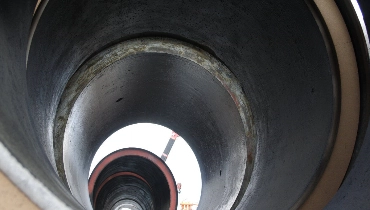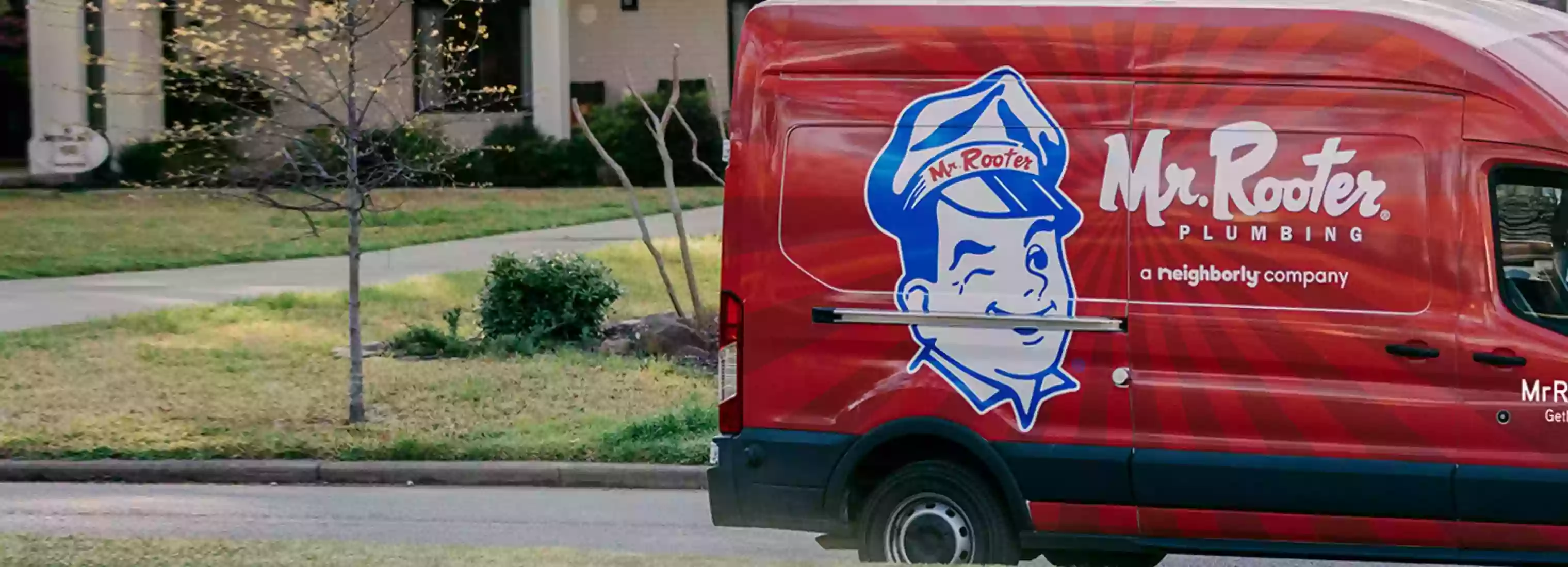What You Need to Know About Pipe Lining in Dallas, TX

Have you heard a lot about pipe lining? Dallas homeowners are choosing to use that type of specialized plumbing service more often because of the many benefits it offers for major repairs. If you've already suffered from serious sewer damage, you may already know about pipelining. When it comes to fixing a buried broken pipe, lining is one of the most effective new methods used by professional plumbers.
Traditional methods for fixing buried plumbing systems involve digging a large trench to access, inspect, and repair damage—but that expensive, invasive technique isn't your only option. Your other options for sewer repair include advanced techniques like pipe lining. Dallas plumbers who offer pipe lining services are often able to complete reliable repairs more efficiently, which makes that method the preferred response for many people in Dallas who need sewer repair.
Pipelining goes by many names, such as pipe bursting, trenchless repair, or trenchless CIPP. Some of those are specific technical terms for different types of trenchless options for repairing buried mains, while others are umbrella terms that generally refer to several kinds of plumbing repairs. If you think you may need a Dallas plumber to fix your buried plumbing mains, then you'll be glad you took the time to learn all about what pipe lining is, the different types and terms, and more from a team of experts like Mr. Rooter Plumbing of Dallas.
What is Pipe Lining?
It's a non-invasive technique used for repairing damage inside buried plumbing systems. Pipe lining—or pipe relining—is actually more of a general term that refers to several different methods. While there are specific differences for each of those types of pipelining, Dallas homeowners only need to know that they are non-invasive methods used to fix buried plumbing systems without digging a large trench—hence their other name, trenchless sewer repair.
How is Pipe Lining Done?
Exact methods vary based on which specific type your plumber uses, but there are general steps required for each method that you may see. An appointment for trenchless repairs in Dallas will typically start with an inspection to confirm which solutions are required for fixing your plumbing issues. After that inspection is complete, service will begin.
One or two small holes may need to be dug in order to access your buried systems. Those are small access holes, and their effect is much less significant than those large trenches dug for traditional repairs. After holes are dug, your plumbers may need to clean out your system before beginning the pipe lining process—especially if it's been a while since your last Dallas drain cleaning appointment.
After your system is clean and clear, the lining can begin. Your plumbers will use specialized equipment to insert a liner that will coat your entire pipe wall. This process may involve the use of a winch to pull that liner through, as well as the application of heat to cure and bond that new material. The ultimate result is like having a new pipe installed inside your existing system.
What is Pipe Bursting?
It's another trenchless plumbing technique that's generally used to replace lines in Dallas that are damaged beyond repair. Rather than relining your existing main, bursting is a method that destroys the existing line and pushes it outward into the surrounding soil. A new section is then winched into place where the previous section has been pushed out. That process makes bursting unique among other methods of advanced pipe repair, as bursting makes it possible to expand the diameter of your buried lines without having to complete a new installation.
What are the Different Types of Liners?
Cured-in-Place Liner Pipes (CIPP) are made of a long piece of resin-impregnated fabric that is pushed through the damaged host pipe using air pressure. This installation method allows it to travel around corners and easily take on the shape of sections with different diameters. After the lining is complete, the material must be allowed to cure before it can be used. Sometimes, heat is applied as part of that CIPP hardening process. CIPP can generally only be used for pipes that are between 4 and 24 inches in diameter.
Fold and Formed Liners—also sometimes referred to by the term deform and reform liner—use polyethylene (PE) or polyvinyl chloride (PVC) that has been heated and folded prior to installation. The folded material is winched through the host pipe, after which a device is used to expand the material and apply heat for curing. Unlike CIPP, this method is not as effective for damage in systems that have curves.
Slip Liners are made of multiple joined lengths, which are inserted as one continuous liner. These sections are often much smaller, so grout is required to fill the empty space between your existing main and the slip liner. This method requires more surface-level preparation than other methods but allows plumbers to skip the bypass pumping process required for quick installation in live systems.
Why Would You Get Pipe Lining in Dallas?
It is one of the best options available for fixing damaged plumbing systems below ground. If you have serious plumbing issues affecting your buried plumbing mains, this is one of the easiest, most convenient options for solving those problems quickly and effectively.
It Saves Time:
Your sewer and water main are the most important plumbing lines in your property. If either of those mains fails, you'll be left without water or sewage service. You could even be deprived of both during an ongoing repair process.
Traditional repairs that involve digging a trench can take several days to complete—and sometimes more than one week. The time required to dig a trench carefully, so that the process doesn't cause collateral damage to your property—beyond the extensive damage to your landscaping created by the trench itself—is time that you'll be left without waste or water services. That's only for digging the trench too. Completing repairs, performing an inspection, and refilling the trench all add time to the process.
You could save yourself a significant amount of time by choosing to contact plumbers that offer trenchless services like pipelining. Dallas plumbers can complete sewer repairs much quicker when they don't have to dig a trench. Skipping that digging saves you time both at the beginning and end of your repairs.
It Keeps Costs Low:
Digging a trench doesn't just drive up the amount of time it takes to fix your damage. It also raises the cost. The average cost of repairs that involve traditional methods is higher than the cost of those based on trenchless sewer repair techniques once you factor in the cost of digging and refilling the trench, as well as the cost of fixing any additional damage to your landscaping.
If your chosen plumber charges by the hour, you'll also save additional costs when you choose pipe lining in Dallas. Trenchless repairs are generally faster than the old methods used for fixing or replacing buried mains, which means your quick, convenient service will cost even less.
It's Safer and More Convenient:
The equipment used for digging a large trench poses some risks for those unfamiliar with the safety requirements of a construction project, and the overall process comes with higher risks for additional damage that could lead to further complications. It's also more disruptive than trenchless techniques, and that extra inconvenience is spread out over a longer period of time.
By relying on the much more simple process of trenchless repairs, your plumbers will be able to fix your drain lines or water main with the lowest possible level of interruption in your life and the safest possible methods. That added convenience and safety is one of the key reasons that people choose to take advantage of services for pipelining in Dallas.
Signs That You Need an Appointment For Pipe Lining in Dallas
Are you wondering if your plumbing issues call for pipelining or something more simple? There are many possible plumbing problems that pester people in Dallas. Pipelining is a great solution for some serious situations, but for something like a clogged toilet, you may only need Dallas clogged drain services.
In general, the signs that you need pipe lining in Dallas are the same as those that indicate you have a serious problem with your sewer or water main. Such signs should always prompt a call to your local, professional plumber, and include situations like:
- Slow drainage that cannot be fixed by plunging or snaking the drain
- Multiple drain clogs appear at the same time
- Sewage or wastewater flooding into your basement
- Sewage or wastewater seeping out of your bathroom sink or shower drain when you flush a nearby toilet
- Puddles of sewage or water appearing in your lawn above buried mains, as well as unusual plant growth from a burst sewer main
- Sudden drops in your water pressure
- The sudden formation of new cracks that start at your foundation
If you ever notice any sudden changes in your plumbing system, don't hesitate to call a professional plumber. Even if it seems like there may not be a serious problem, it's possible that you could be suffering from subtle, underlying issues that will create major plumbing problems in the future.
Do You Need to Fix Your Older Sewer System with Professional Pipe Lining in Dallas?
Replacing or repairing older sewer mains is another reason that many people make an appointment for pipelining in Dallas. If you live in one of Dallas' older communities or one of the older cities in the areas surrounding Dallas, you may have sewage mains made from materials that are more prone to failing—and more vulnerable to damage.
Orangeburg, clay, and cast iron pipes are three common types of vulnerable sewer lines that were used for several decades. Orangeburg sewer systems are particularly weak and problematic, but even clay and cast iron are vulnerable to problems like corrosion and tree root penetration. Most of these materials were used until the 1960s and 1970s, so if your home is over fifty years old and you're not sure about the age or state of your plumbing, you may want to schedule an appointment with a professional plumber in Dallas.
How Long Will It Take to Complete Pipe Lining?
The exact length of time will always depend on the severity of your particular plumbing problem, but pipe lining is generally quicker than traditional methods for many situations in Dallas. In most cases, it can be completed in just one or two days. That's much quicker than the time required for traditional techniques, and the results are just as reliable and effective—if not more so.
How Effective is Pipe Lining?
Some property owners in Dallas worry that pipe lining will not effectively solve their problems, or that the process of inserting a new liner will reduce the overall efficiency of their system because of the reduced inner volume, but you don't need to worry about either of those possibilities.
The material used for liners is just as strong as the standard PVC pipes used for many modern plumbing systems, so you don't have to worry about being more vulnerable to issues like tree root penetration.
To overcome the challenges that may be presented by reducing the inner volume of plumbing mains, liner materials are designed to have a lower surface friction coefficient than many existing plumbing materials. That means that although the space inside your main has been reduced, the waste or water flowing through will be able to move more easily than before. This is especially true for properties in Dallas with systems made from older materials, or those with particularly old, worn-down mains.
Do You Need Pipe Lining in Dallas?
Mr. Rooter Plumbing of Dallas is here to help! We're experts in all types of Dallas drain repair and plumbing repair, including trenchless sewer line repair. Our team of expert plumbers can help both homes and businesses in Dallas with a wide range of services for fixing any plumbing problem.
Call to schedule an appointment or learn more. We proudly serve Dallas and many nearby communities such as Plano, Richardson, and Garland.
 Click to call
Click to call


